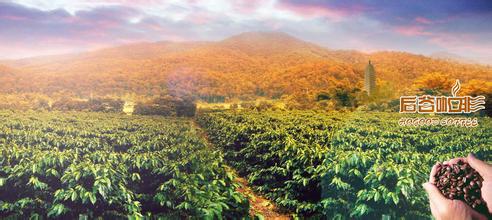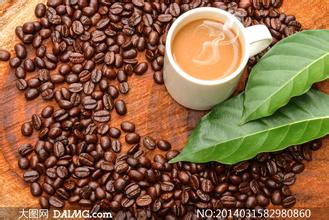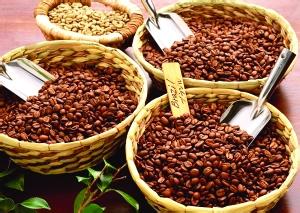The effect of air temperature in coffee roaster-how to drink coffee powder
The effect of air temperature in coffee roaster-how to drink coffee powder
The choice of the material of the inner pot is the most tangled place when making the product. in the initial design, because the stainless steel material can be rolled up and welded, it is convenient to manufacture, while the cast iron material has a great initial investment, so stainless steel has become a very tempting choice. but after the test, it is found that the stainless steel inner pot can not evenly transfer heat to the whole inner pot, resulting in some points that will overheat and scald coffee beans. A good stainless steel pot is a composite structure, with more than three layers at the bottom, with an outer layer of stainless steel at the bottom, with a copper plate in the middle as an important heat conduction layer to disperse the uneven heat energy at the bottom of the pot, so that the internal stainless steel layer can be heated evenly. But this kind of technical solution is used in the inner pot of the roaster, we really can't do it.) (PS: the three-layer structure requires a large punch to integrate the structure and exhaust air. Moreover, what people do is a flat plate, and the roaster is an inner pot.)
So after spending almost all the money at that time, we made the R500 series cast iron inner pot out of cast iron, which is still in use today.
The material of cast iron made the inner pot of R500 reach the same material level as most imported models, and we were proud of it for a long time until we learned about plasma spraying technology.
Far-infrared materials are widely used in the food industry, but no one has ever tried to use it in the harsh environment of a roaster. The change of temperature difference, inner pot expansion, friction and coffee bean impact all pose challenges for us. Until we tried to use plasma spraying technology to firmly attach ceramic far-infrared materials to the inner pot, this problem was still solved. Knocking and friction will not destroy its structure.
Coffee must be cooled immediately after roasting, quickly stop the pyrolysis at high temperature and lock the flavor. Otherwise, if the high temperature in the beans continues to work, the aromatic substances will be burned. There are two cooling methods: one is air-cooled and the other is water-cooled. The air-cooled type needs a lot of cold air to cool the coffee beans quickly within 5 minutes. In the field of professional baking, large roasters are equipped with a tray with a rotatable driving arm; when the baking is completed, the beans are automatically fed into the tray, and the fan at the bottom of the tray is immediately activated to blow cold air. And the pushing arm stirs the coffee beans to cool them. Although the speed of the water-cooled type is slow, it is clean and does not pollute, and it can better retain the aroma of the coffee, so it is used by the selected coffee industry. The water-cooled method is to spray a layer of water mist on the surface of the coffee beans, allowing the temperature to drop rapidly. As the amount of spraying water is very important, it requires precise calculation and control, and it will increase the weight of baked beans, which is generally used in large-scale commercial baking.

Important Notice :
前街咖啡 FrontStreet Coffee has moved to new addredd:
FrontStreet Coffee Address: 315,Donghua East Road,GuangZhou
Tel:020 38364473
- Prev

Step diagram of Japanese hand-made coffee-how to use French coffee maker
Japanese hand brewing coffee step diagram-French coffee maker usage Japanese hand brewing coffee extraction also has strict requirements on timing. Generally speaking, the extraction time of one cup is about 1 minute 30 seconds, two cups are about 2 minutes to 2 minutes 30 seconds, and 3 cups are about 3 minutes, not more than 3 minutes 30 seconds. Without this time limit, if the extraction time is too short, it is easy to cause insufficient extraction, insipid taste and passing.
- Next

Why do you need to use the same amount of powder every time you make coffee-espresso machine extract powder
Why do you need the same amount of powder every time you make coffee? Is the espresso machine extracting powder and the water temperature low? Is the grinding degree of powder appropriate? Is the weight sufficient? Does the pump pressure match the amount and grind of coffee powder? Is the coffee ground evenly pressed during preparation? As long as one of these factors is not suitable, it will lead to sour coffee taste, and these factors
Related
- Beginners will see the "Coffee pull flower" guide!
- What is the difference between ice blog purified milk and ordinary milk coffee?
- Why is the Philippines the largest producer of crops in Liberia?
- For coffee extraction, should the fine powder be retained?
- How does extracted espresso fill pressed powder? How much strength does it take to press the powder?
- How to make jasmine cold extract coffee? Is the jasmine + latte good?
- Will this little toy really make the coffee taste better? How does Lily Drip affect coffee extraction?
- Will the action of slapping the filter cup also affect coffee extraction?
- What's the difference between powder-to-water ratio and powder-to-liquid ratio?
- What is the Ethiopian local species? What does it have to do with Heirloom native species?

